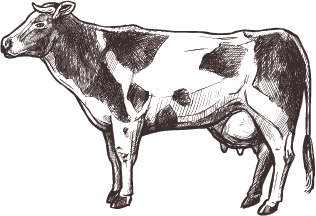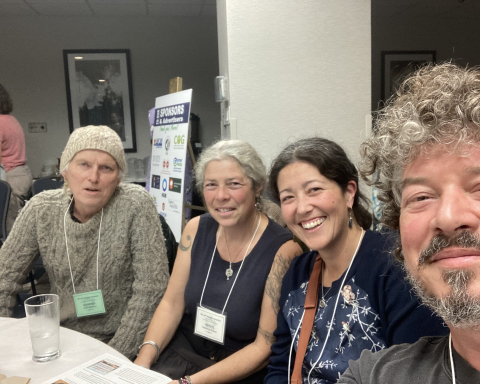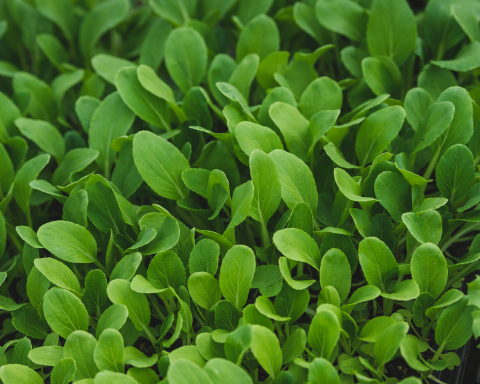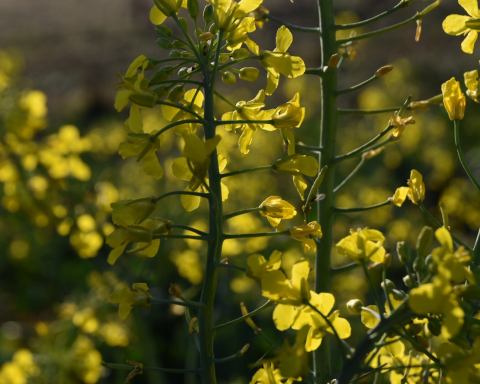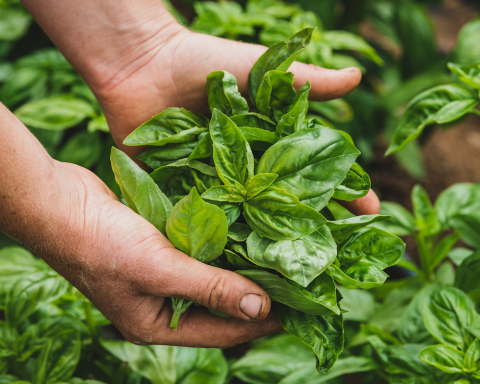Rebecca Kneen, BC board representative to the Organic Federation of Canada
Once upon a time, we in BC wrote our own organic standards. Those of us with the inclination got together regularly to figure out the problems and decide how best to address them while staying true to our principles. Every year, at the COABC conference, we’d debate all the proposed changes to the standards. Some of us will never forget the epic eight-hour discussions we had about treated posts, and the many-year discussions on poultry standards!
It was a tremendous group effort, and a huge amount of thought and work went into it—and it created the bonds which still hold COABC together.
In 2009, after long discussion throughout the organic community, we collectively decided that a national organic standard was necessary. More and more products labelled as “organic” were coming into Canada, with no verification as to their actual quality or how it would compare to our own standards. Even within Canada, most provinces lacked their own certification regulations. The goal was to create a robust, thoughtful, and ethical standard which could be used to improve the quality and scope of organic production within Canada, and a measurement to accept or reject incoming goods as equivalent organic quality. The BC and Quebec standards formed the basis of the current rules—and the system has been evolving ever since, as techniques, resources, and markets have changed.
Most of us are concerned about the standards themselves—the rules about what, how much, how often. We refer to them when we are looking at such things as a new process, crop input, sanitizer or cleaner, or when we are designing a new livestock barn. We check them right after our annual inspection, when the Verification Officer (VO) references a particular section and we need to understand it. Sometimes we read the Q&A when the E-News comes out and we realize that there might be something that affects our farm. What we mostly DON’T do is think about how these standards are created and who’s involved—unless we think a new decision is wrong. In order to understand why certain decisions are made, we need to understand the structure, membership, and pressures in the organic system.
So, who is it that is looking after the standards? What pressures do they operate under, who’s the boss, and how do we make sure that our standards embody the ethics and values that created the organic idea in the first place? This is where we get to play the acronym game.
The Canada Organic Regime (COR) is the system of organic certification. It has two parts: enforcement and regulation. The entire system is part of the “Safe Food for Canadians” act, and is enforced by (in descending order): the Canada Food Inspection Agency (CFIA), the Conformity Verification Bodies (CVB) like COABC’s Accreditation Board, and finally Certifying Bodies (members of COABC such as NOOA, FVOPA or the for-profit CBs such as Eco-Cert). The regulations apply to any product that moves between provinces or internationally that carries the COR logo.
The Canadian Organic Standards themselves are owned by the Canadian General Standards Board (CGSB) which makes the rules about how frequently the standards must be updated and the process used. The CFIA establishes organic equivalency agreements with other countries (Japan, USA, EU, Switzerland, Costa Rica). The Standards are owned by a government agency but reviewed every five years in collaboration with the organic industry. CGSB staff are not knowledgeable about organic agriculture; they only verify the review process and have nothing to do with the content.
Here’s where the rubber meets the road for most of us: the standards writing and review process. The top level of this process is the Standards Interpretation Committee (SIC).
The CFIA created the SIC to resolve conflicts between CBs and producers. The SIC is made up of appointed members from across the organic sector and is managed by the Organic Federation of Canada (OFC). You will have seen the many lists of questions put to the SIC: the answers published on the OFC website are legally enforceable. CBs and producers have to comply with SIC decisions, as per the CFIA Operating Manual. The OFC ensures that SIC members have the required expertise and deep knowledge of a variety of areas of organic agriculture and processing, and provides guidance to the SIC.
The CGSB appoints its own Technical Committee, also made up of industry experts, but in this case, they are selected by the CGSB not by the OFC. This committee has the power to modify the standards, whereas the SIC can only clarify the meaning of the standards. The Technical Committee analyzes recommendations from the SIC and the OFC Working Groups or the public when an amendment or a full review of the standards is launched.
The OFC working groups are made up of volunteers from across the country with expertise in specific areas. There are working groups for livestock, specific crops, and so on. Petitions for changes to the standards are received by the OFC, then brought to the various working groups for discussion, research, and recommendation. The working groups have up to 20 members, all participating in the entire process of reviewing questions and petitions for changes. They are able to do their own research and to share information widely. This is not a secret process!
In previous standards reviews, proposals have been received on a huge range of issues. As an example of how the working group works, one proposal received in the last round requested that the use of non-organic manure be prohibited, another that manure from non-organic sources including confined livestock or stock kept in the dark be permitted. In the first case, the proposal was rejected because there is a large deficit in the supply of organic manure, and such a restriction would create a huge barrier to organic production. In the second case, the proposal was also rejected on the grounds that the petition would weaken the standards and erode public confidence.
There are many areas where this process can be influenced in any direction. The membership of the working groups, technical committee, and SIC itself can be manipulated (intentionally or not). How questions are grouped for presentation to the working groups, and which resources are used will influence the outcome.
The OFC is serious about upholding organic values and principles. In soliciting members for the working groups, we aim for skilful, balanced representation with people whose interests go beyond short-term financial gain. We try to balance technical expertise with breadth of experience, large and small producers, cross-country representation, and commitment to organic principles.
There is a lot of pressure on all parts of the organic industry to allow more money to be made, to loosen regulations so that they are “more accessible”, and to allow foreign influence on our standards. The recent move by the USA to push for Canada to include hydroponics in the organic standards is one example. In this case, the OFC, Canada Organic Growers (COG) and the Canada Organic Trade Association (COTA) collectively repudiated this move (see the excerpted letter in this issue of the BCOG). We’re also seeing livestock standards pressured to allow more confinement and less outdoor access, and crop standards pushed to allow indoor growing without natural sunlight.
The three national industry groups (OFC, COG, and COTA) are working together to find more ways to inextricably embed our principles into the entire regulation and the processes for amendment.
What this really needs is support from our membership: from you. We need more people to volunteer for the working groups and the CGSB Technical Committees. We need you to put your expertise and ethics to work for the whole community. You don’t need to be a world-renowned expert, you just need to want to work, learn and do a lot of reading and talking. Most of all, you need to want to support the community that supports you.
Contact Nicole at the Organic Federation of Canada to find out how to volunteer for any of these committees: nicole.boudreau@organicfederation.ca
Read more:
Canada Organic Trade Association
Rebecca’s parents led her down the sheep track to food sovereignty and food systems analysis through their Ram’s Horn magazine and Brewster’s many books. She farms and brews in Secwepemc Territory at Left Fields/Crannóg Ales and is COABC’s representative to the Organic Federation of Canada.
Re: Official position of the Canadian Organic sector on Hydroponics being considered in organic
Excerpts from the full letter:
“We stand united and unequivocally reject the allowance of hydroponics by the Canada Organic Regime (COR) for sale in Canada and for export to other trading partners. The very notion of being asked to articulate why hydroponics is banned from COR is similar to being asked why we would ban synthetic pesticides, genetically engineered seeds and have built humane treatment of animals into the organic standards.
The global definition of organic (despite the USA’s National Organic Program recent ruling permitting hydroponics) prohibits hydroponics. In fact, there is a court hearing challenging the NOP’s permittance of hydroponics currently in the US court system as the USDA’s allowance of hydroponics is a fundamental shift away from the global norms of what is defined as organic. We fully support and stand behind the organic sector in the USA who is challenging the NOP/USDA for allowing this egregious act.
The organic sector is a $5.4 billion market in Canada, with over a billion in export sales worldwide. The USA’s NOP hydroponic products are banned from all export sales due to not meeting international standards. We stand united in that we do not want any US hydroponically produced products entering Canada and lowering the public trust that we have worked to establish in Canada. We also do not accept or support the Canadian Horticulture Canada (CHC) and the Ontario Greenhouse Growers position that there is a trade harmonization concern.
Our Canadian organic standards and US-Canada Equivalency Arrangement is absolutely clear that operators must adhere to Canadian standards and respect the details of the equivalency arrangement. The system has been set up banning hydroponics since 2009, calling out critical variances in our US- Canada Equivalency arrangement. It is of utmost concern if the Government of Canada wishes to alter the established organic standards and trade arrangement details that the organic sector has been functioning under (and strongly support). Amending the Canadian organic standard (or other mechanisms available to government) to permit organics to be produced through hydroponic methods would not only damage the trust and reputation of the Canadian organic label, but also override the research and decision reached by the Organic Agriculture Technical Committee. Any changes to current practises made without the consensus of the Technical Committee would be a breach of the consensual principles embedded in the policies and procedures of the Canadian General Standard Board.
Our concern is that we risk retaining our respected global position in the organic marketplace and that significant trading partners, such as EU, Japan, Switzerland, would need to alter the equivalency arrangements we have with these markets should hydroponics in the organic system be permitted under any circumstances in Canada. With the court case ongoing in the USA, we certainly feel it would be detrimental to our sector to allow CHC’s argument of not being able to access the US market opportunity as a worthwhile argument to alter the standards/trade arrangement or create any policies which would change the current practise of banning all hydroponics under the COR. We support the horticulture sector accessing the US market with their conventionally grown produce but we diametrically oppose their position of trying to drag the Canadian organic sectors reputation down to the US’s “lowest common denominator” which is globally rejected and may be overturned through a court process. There is no other country in the world that permits hydroponics in their organic programs and it would be a fatal error to move in this direction for the sake of an opportunistic market opportunity.”
More reading:
foodsafetynews.com/2019/02/organic-industry-is-not-giving-hydroponic-growers-a-warm-embrace
centerforfoodsafety.org/files/1_16_19_cfs-hydroponics-petition_final_11376.pdf


